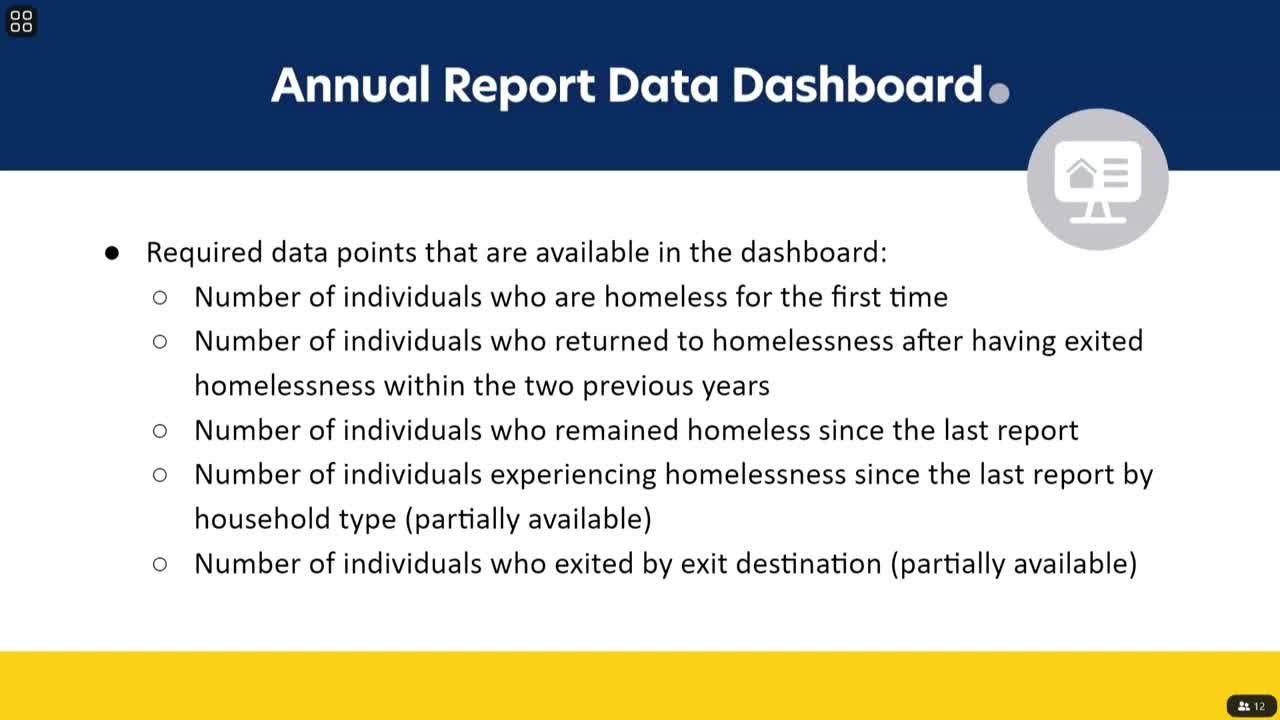Data reveals alarming trends in homelessness crisis
September 18, 2024 | Utah Interim, Utah Legislative Branch, Utah
This article was created by AI summarizing key points discussed. AI makes mistakes, so for full details and context, please refer to the video of the full meeting. Please report any errors so we can fix them. Report an error »

In a recent government meeting, officials discussed critical data regarding homelessness trends and the effectiveness of current interventions. The meeting highlighted a concerning 4% increase in the number of individuals experiencing homelessness, as revealed by the latest point-in-time count. This rise includes first-time homeless individuals and those returning to homelessness, underscoring the ongoing challenges faced by the community.
Key data points presented included the prevalence of mental health disorders, substance use issues, chronic health conditions, and other vulnerabilities among the homeless population. Specific demographics such as veterans and unaccompanied youth aged 24 and younger were also noted as significant subpopulations within the broader homeless community.
The discussions emphasized the importance of tracking the flow of individuals entering and exiting homelessness services, as mandated by House Bill 298. This data is crucial for understanding the dynamics of homelessness and for informing policy decisions aimed at addressing the issue effectively.
Officials reiterated their commitment to making homelessness \"rare, brief, and non-recurring,\" a goal that hinges on addressing the underlying causes, particularly the high cost of housing. The meeting concluded with a call for continued data-driven strategies to enhance support for those affected by homelessness and to report findings to the legislature for further action.
Key data points presented included the prevalence of mental health disorders, substance use issues, chronic health conditions, and other vulnerabilities among the homeless population. Specific demographics such as veterans and unaccompanied youth aged 24 and younger were also noted as significant subpopulations within the broader homeless community.
The discussions emphasized the importance of tracking the flow of individuals entering and exiting homelessness services, as mandated by House Bill 298. This data is crucial for understanding the dynamics of homelessness and for informing policy decisions aimed at addressing the issue effectively.
Officials reiterated their commitment to making homelessness \"rare, brief, and non-recurring,\" a goal that hinges on addressing the underlying causes, particularly the high cost of housing. The meeting concluded with a call for continued data-driven strategies to enhance support for those affected by homelessness and to report findings to the legislature for further action.
View full meeting
This article is based on a recent meeting—watch the full video and explore the complete transcript for deeper insights into the discussion.
View full meeting

